After an incredible morning at Carlsbad Caverns, we set out on a 3.5-hour drive across New Mexico to our second National Park of the day; White Sands. Home of the world’s largest gypsum dunefield, White Sands is also adjacent to the Holloman Air Force Base and the White Sands Missile Range. In 1945, the world’s first atomic bomb was detonated about 60 miles north of the park. Admittedly, we didn’t do a ton of research about this park in advance (so we knew none of that) but we were excited to visit the Visitor Center to learn about the dunes. After waiting in a very long and slow line (only one group was allowed in at a time due to Covid) we learned that the exhibits weren’t even open and everyone was just waiting in line for the gift shop. Darn. After a quick browse of the souvenirs, we made our way into the park.
In a last ditch effort to learn something about the beautiful place we were visiting, Allie and I picked the Dune Life Nature Trail, which sounded like it would give us some good information about the dunes’ ecology. The Dune Life Nature Trail is a one-mile interpretive loop that climbs up into the dunes.
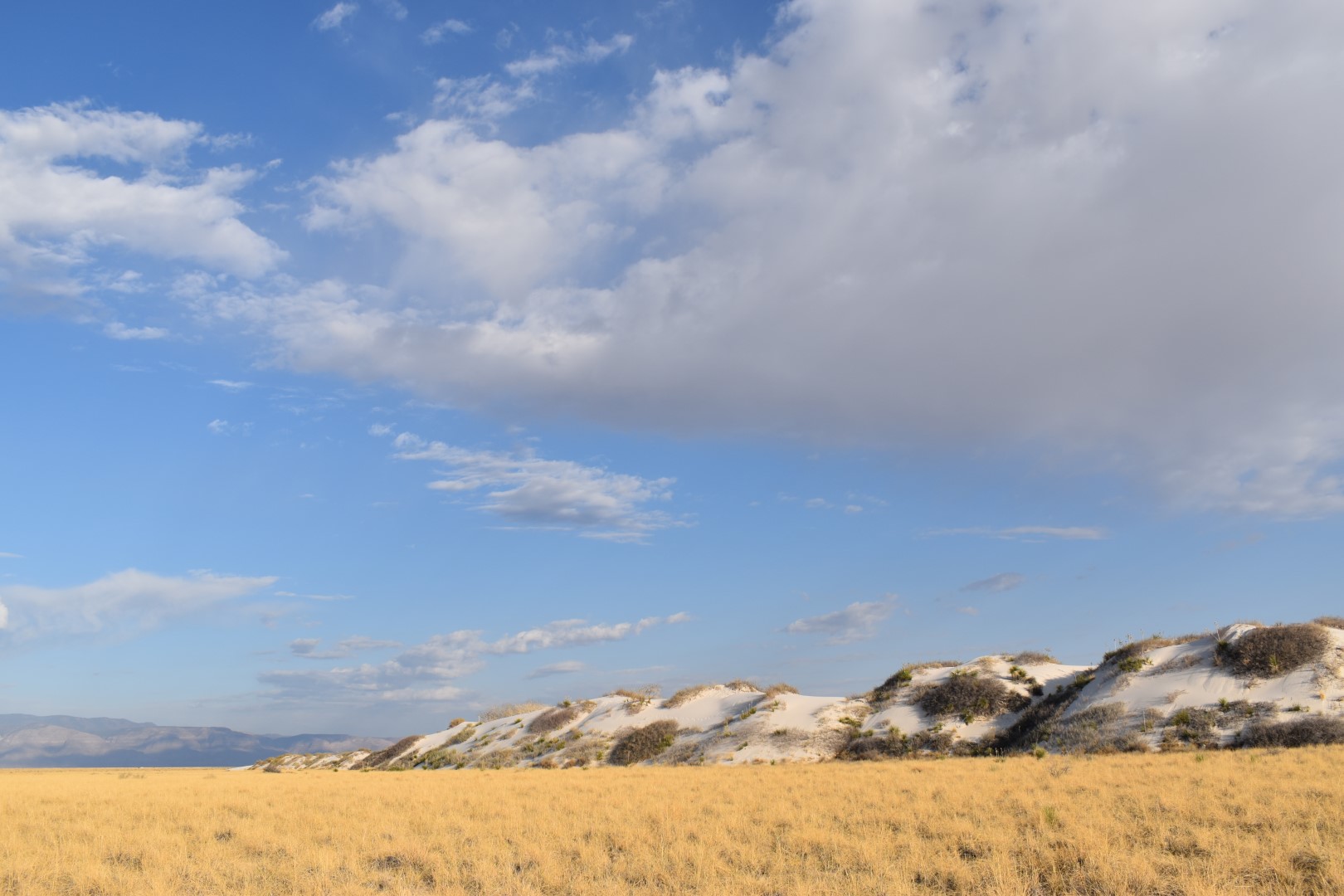
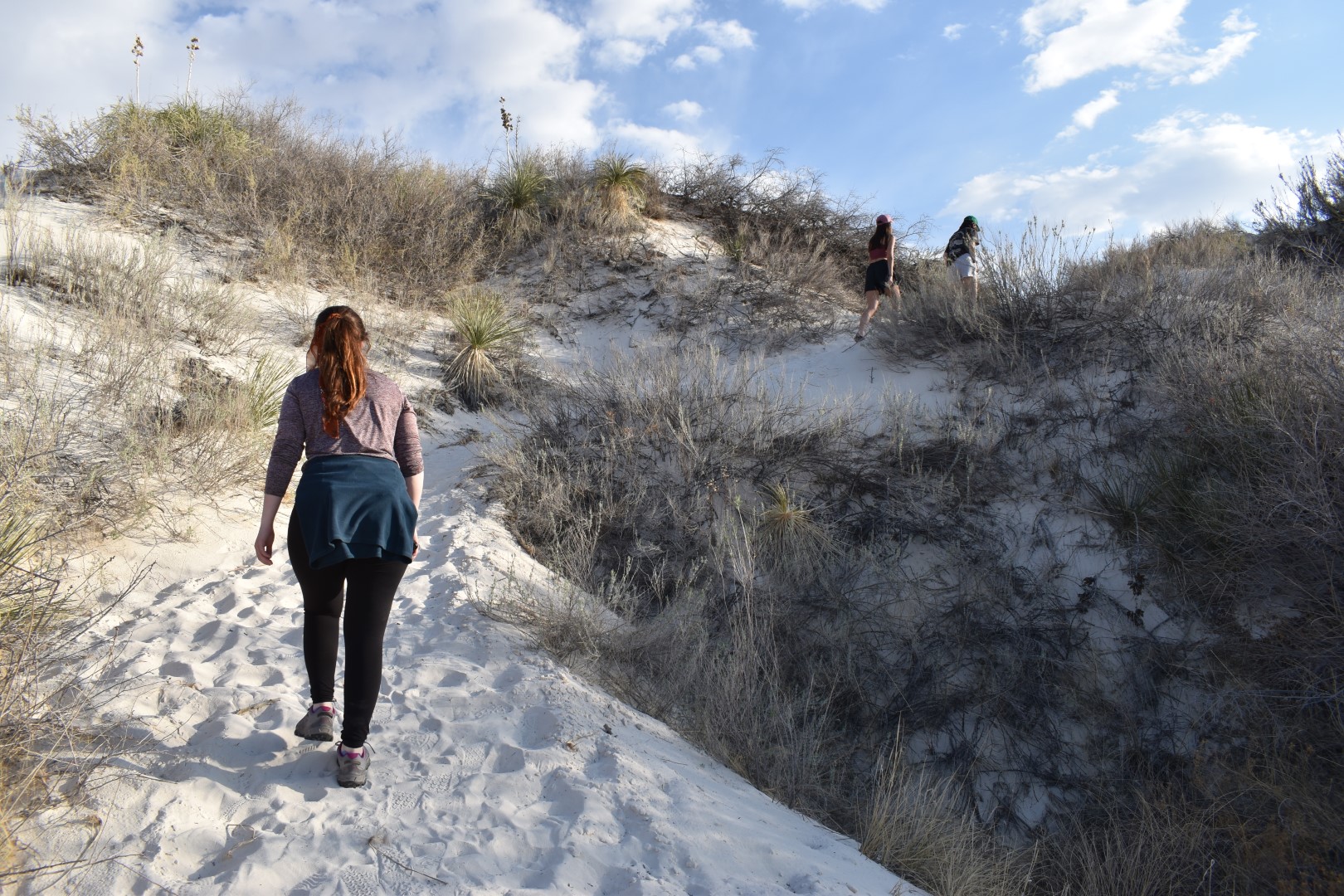
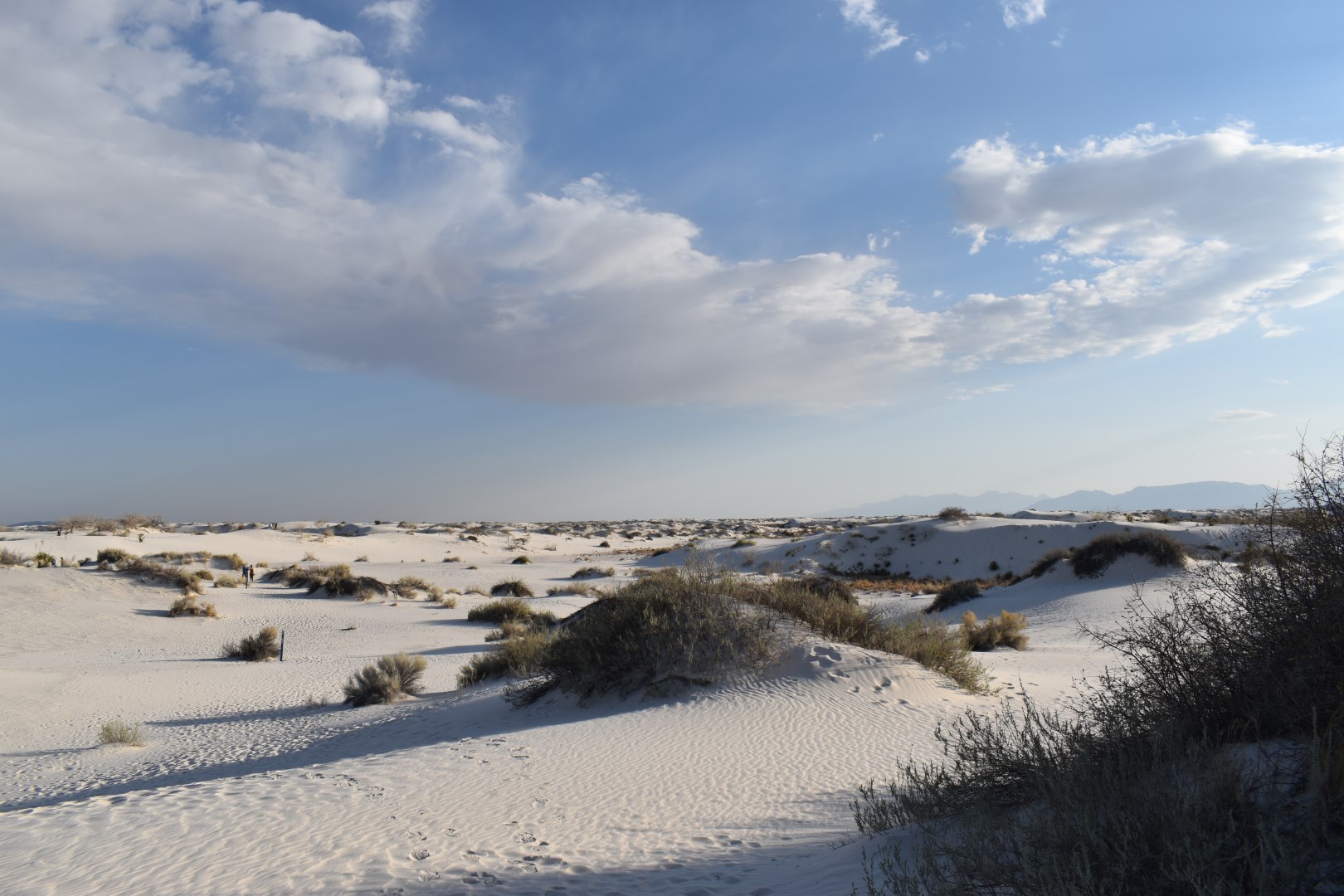
Surprisingly, the area on top of the dunes was almost flat and had quite a bit of vegetation. The only other dunes I’ve visited are the Great Sand Dunes in Colorado, which are tall, tannish-brown, and nearly devoid of vegetation. These dunes were drastically different and while perhaps less dramatic than their taller cousins in Colorado, they were beautiful and fun to explore.
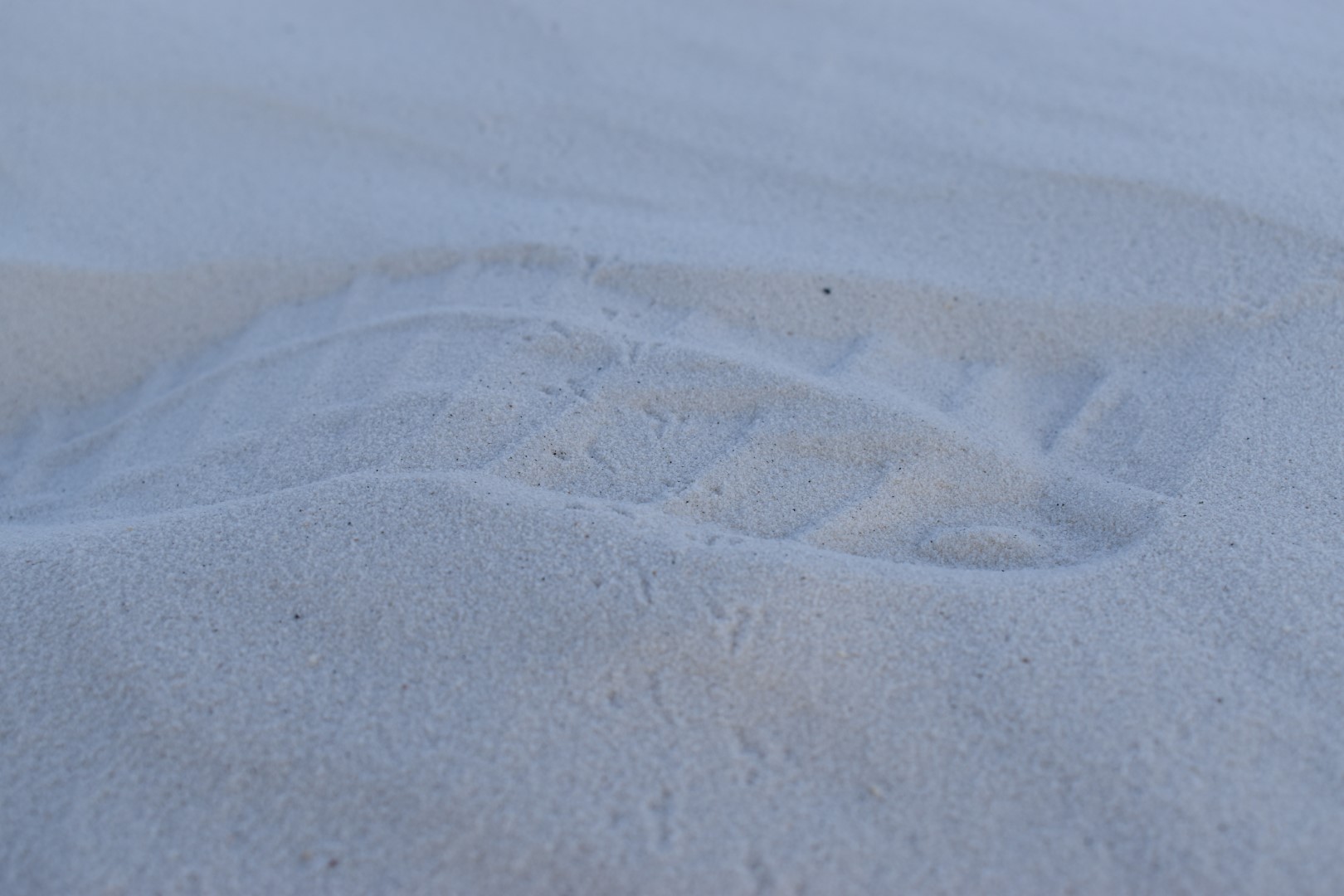
The loop was more a marked route than a trail as the loose sand is constantly moving. There were often trail markers but some had blown down or were difficult to spot. Many people went off-trail and it was sometimes difficult to discern the correct route. There were a handful of interpretive signs scattered along the loop, which we were very excited to read, but they turned out to be geared more towards children and not terribly informative for adults. We continued our visit knowing almost nothing about the park or its ecosystem.
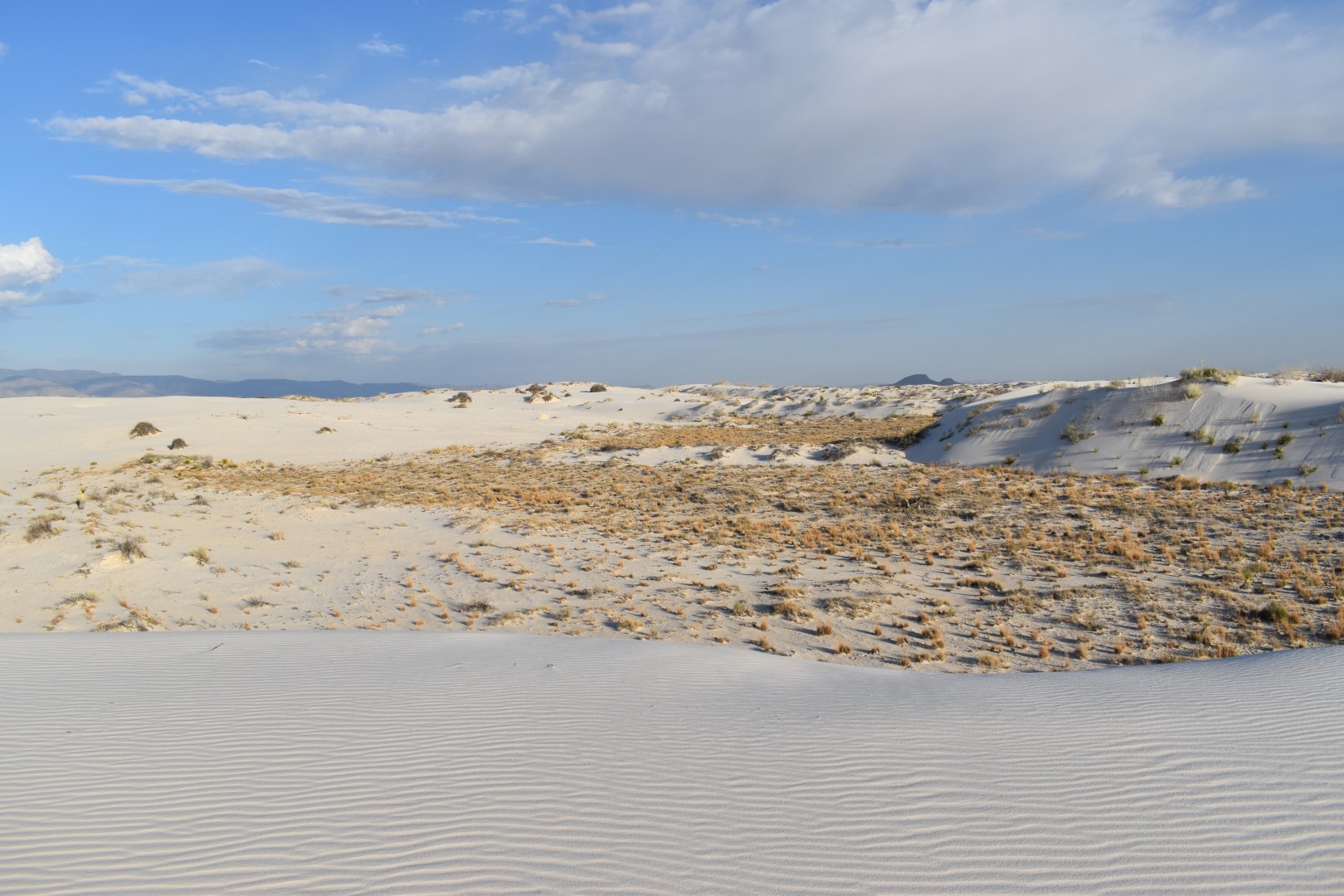
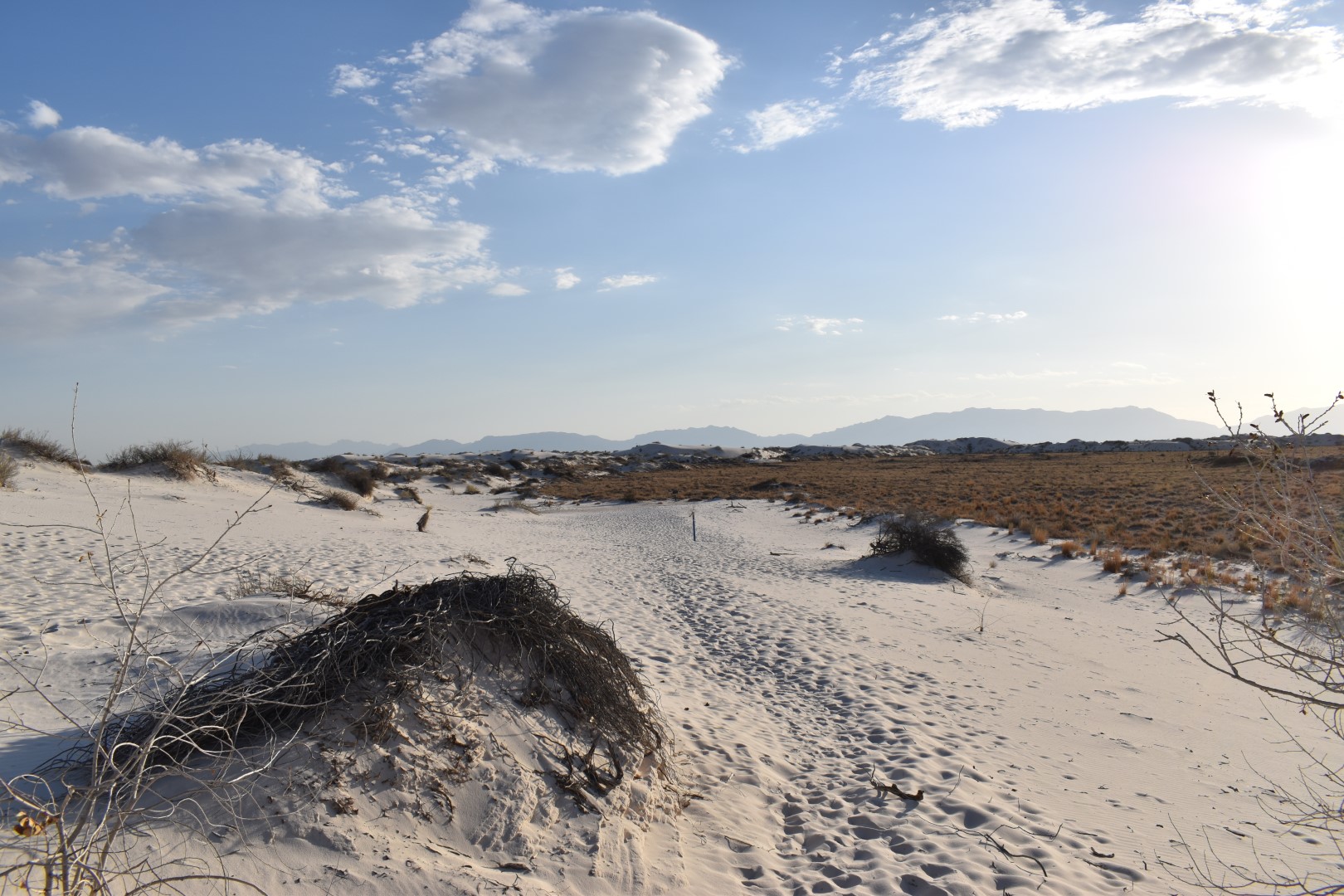

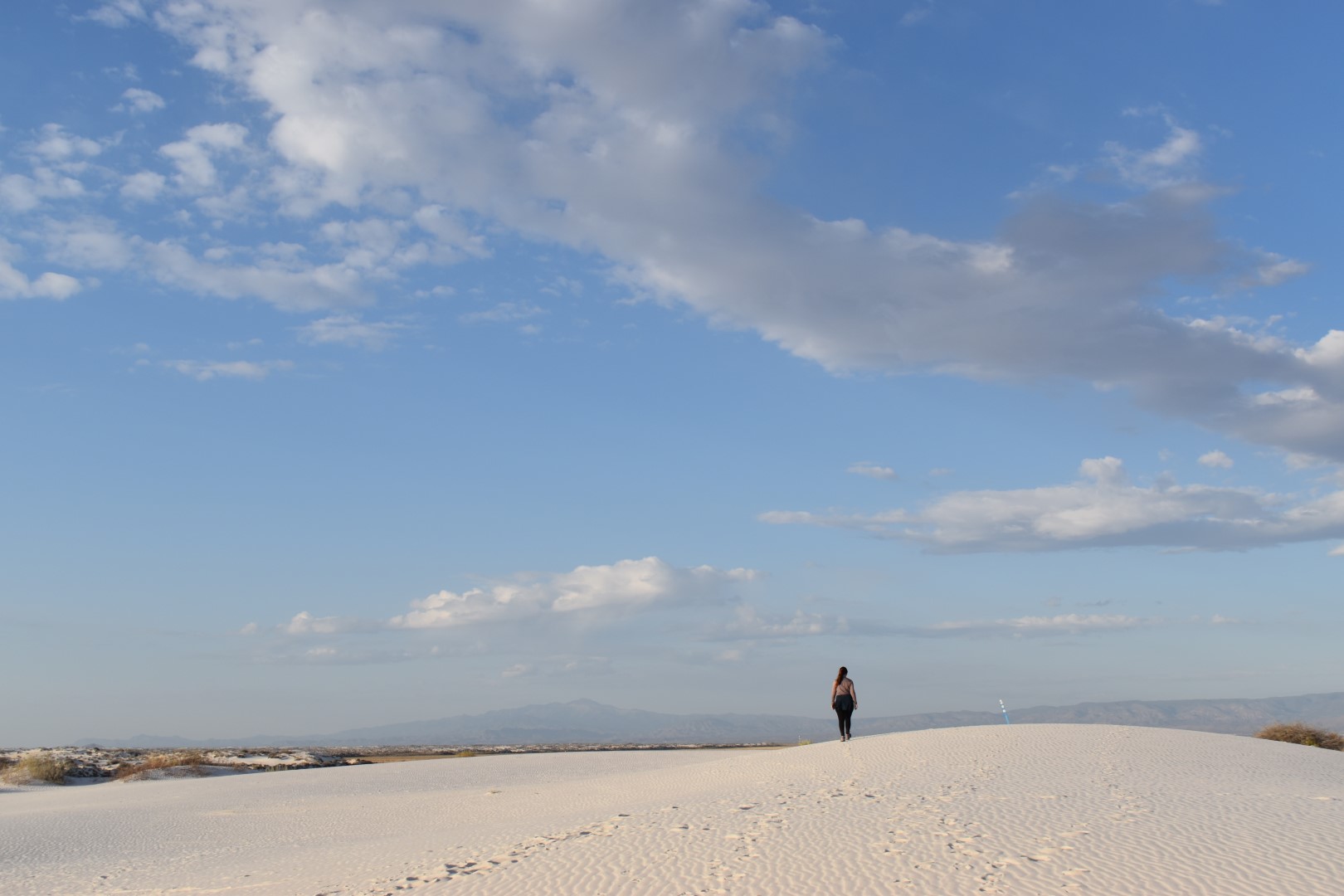
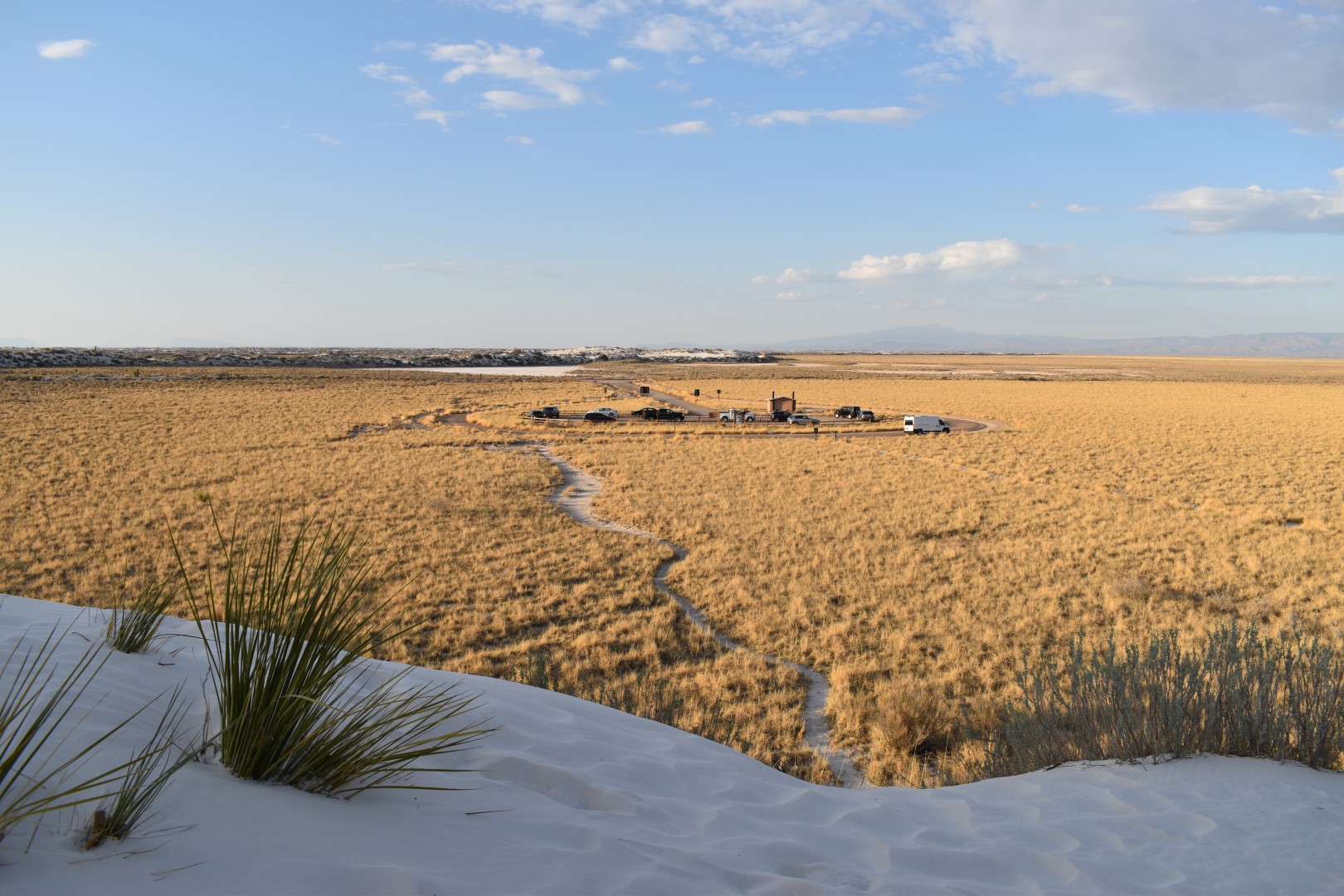
Sunset was approaching so we continued along the eight-mile Dunes Drive. There were rangers patrolling all along the road and pulling cars over for violating the very low speed limit. We were careful to keep our speed in check as we completed the scenic drive through the dunes. We were looking for a spot away from the crowds to climb into the dunes to watch the sunset. This part of the park allows off-trail travel and sand-sledding so there were people everywhere; watching the sunset, sledding, and partying. We hiked into the dunes at least half a mile to find solitude, and this time we went barefoot.

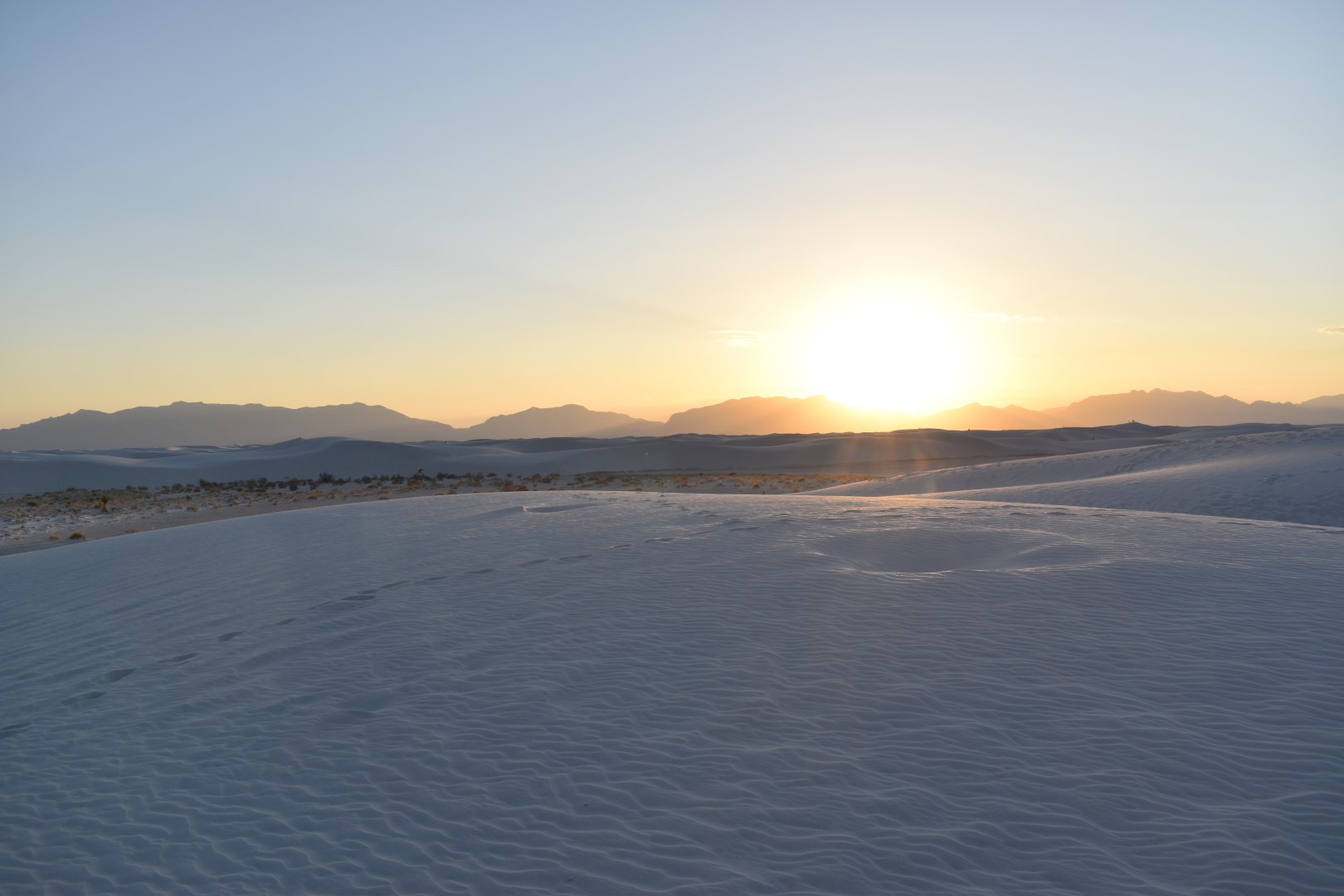
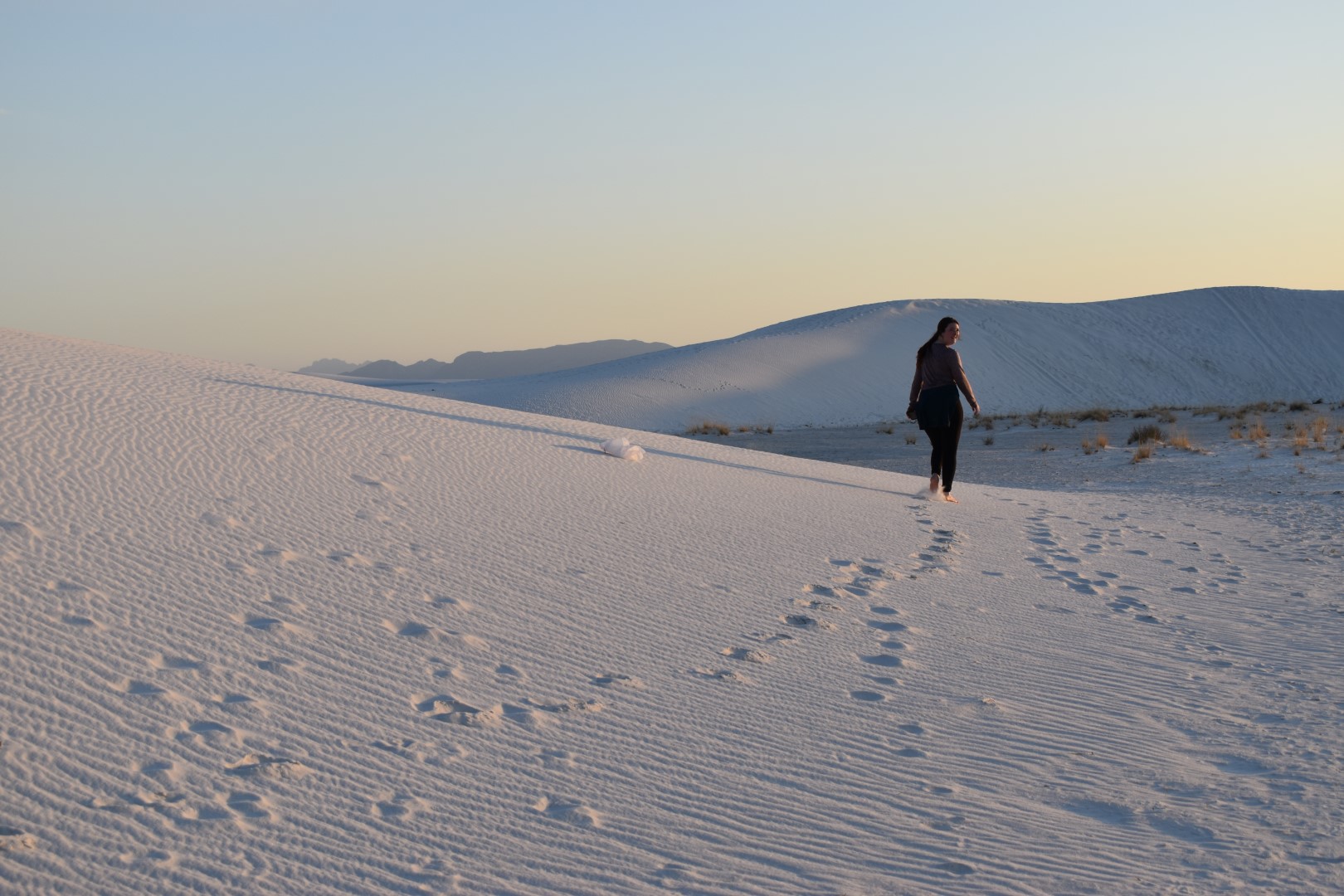


Once we hiked far enough that we could no longer hear anyone, we sat down in the sand to watch the beautiful sunset over the San Andres Mountains and relax after a long day.
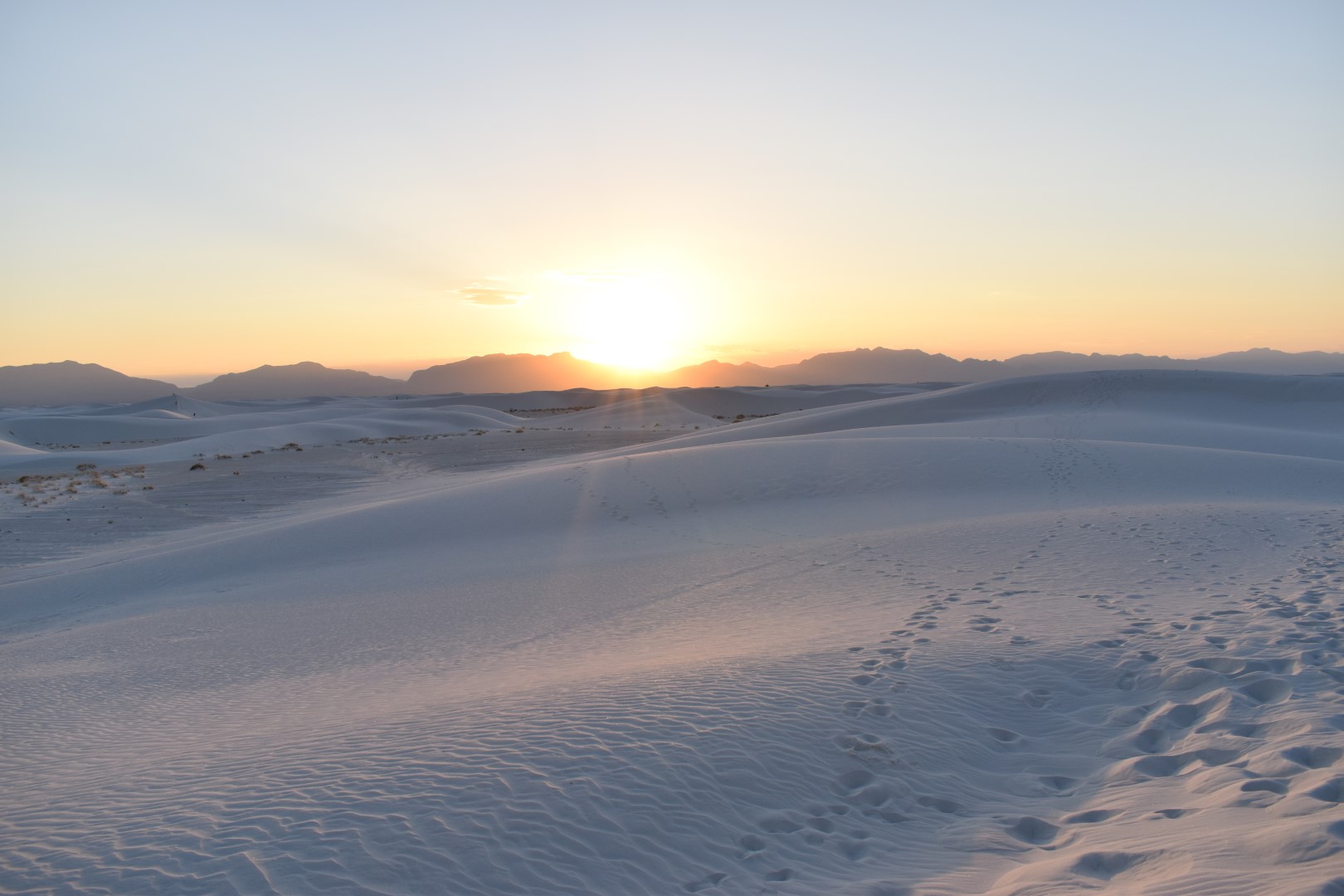
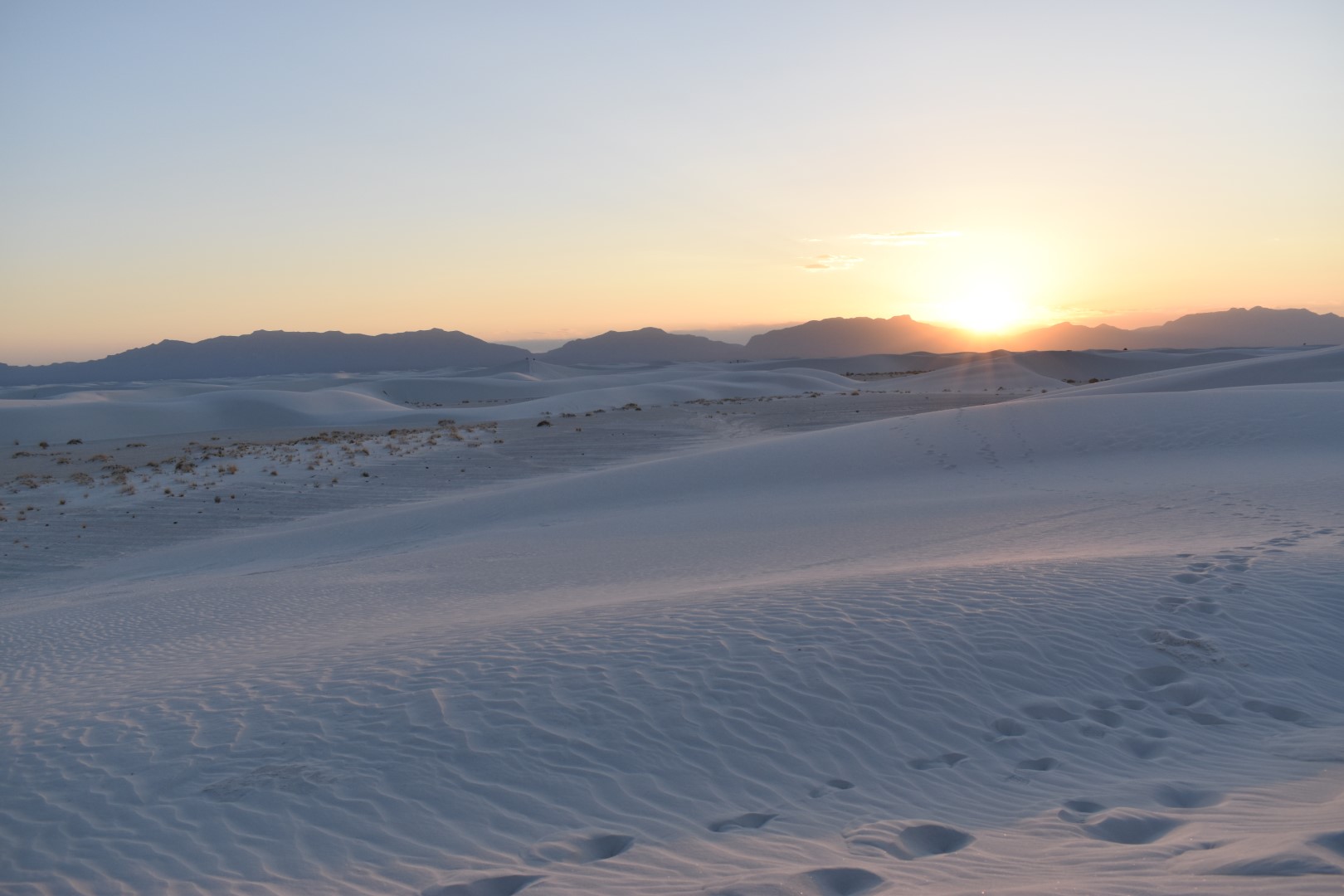
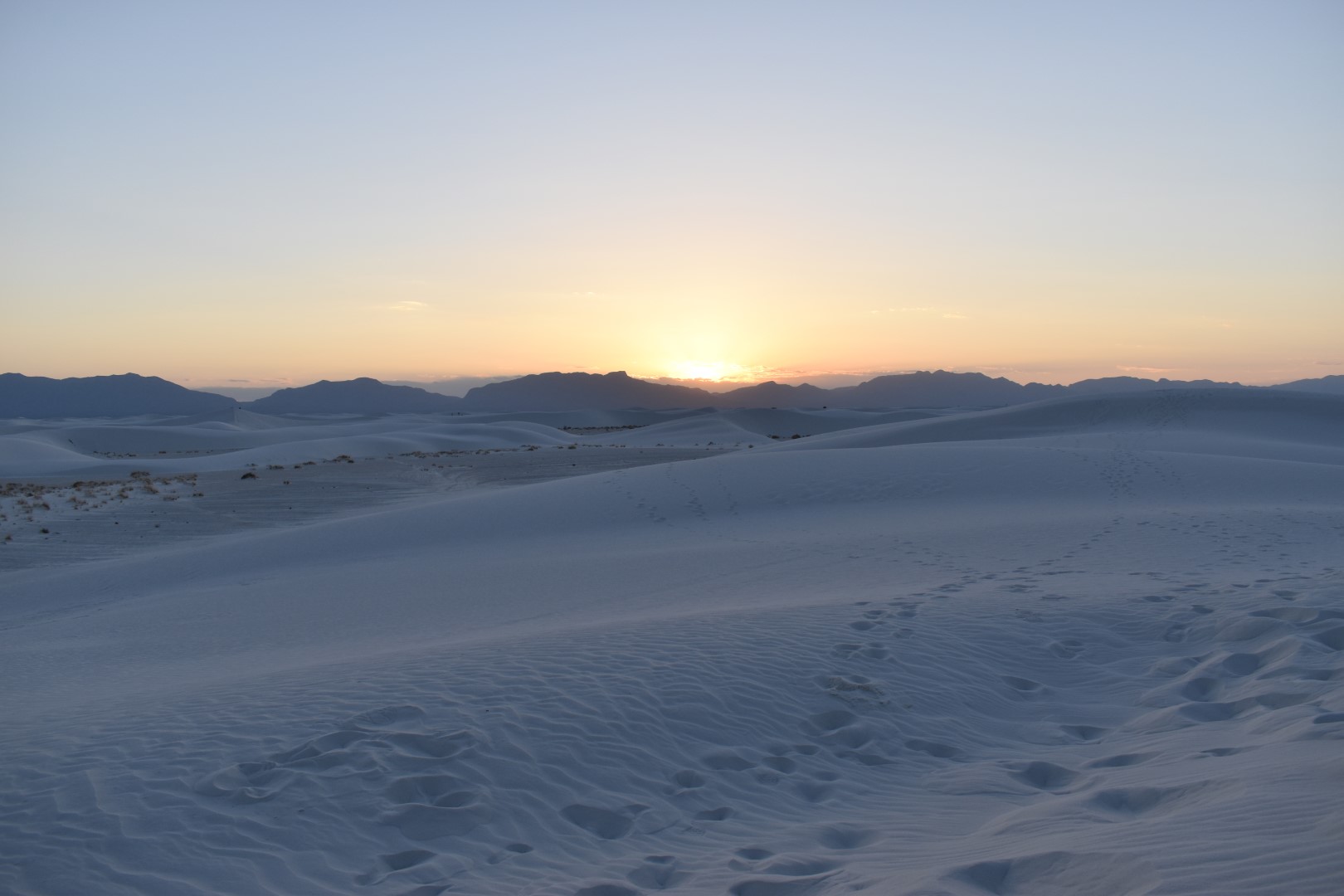

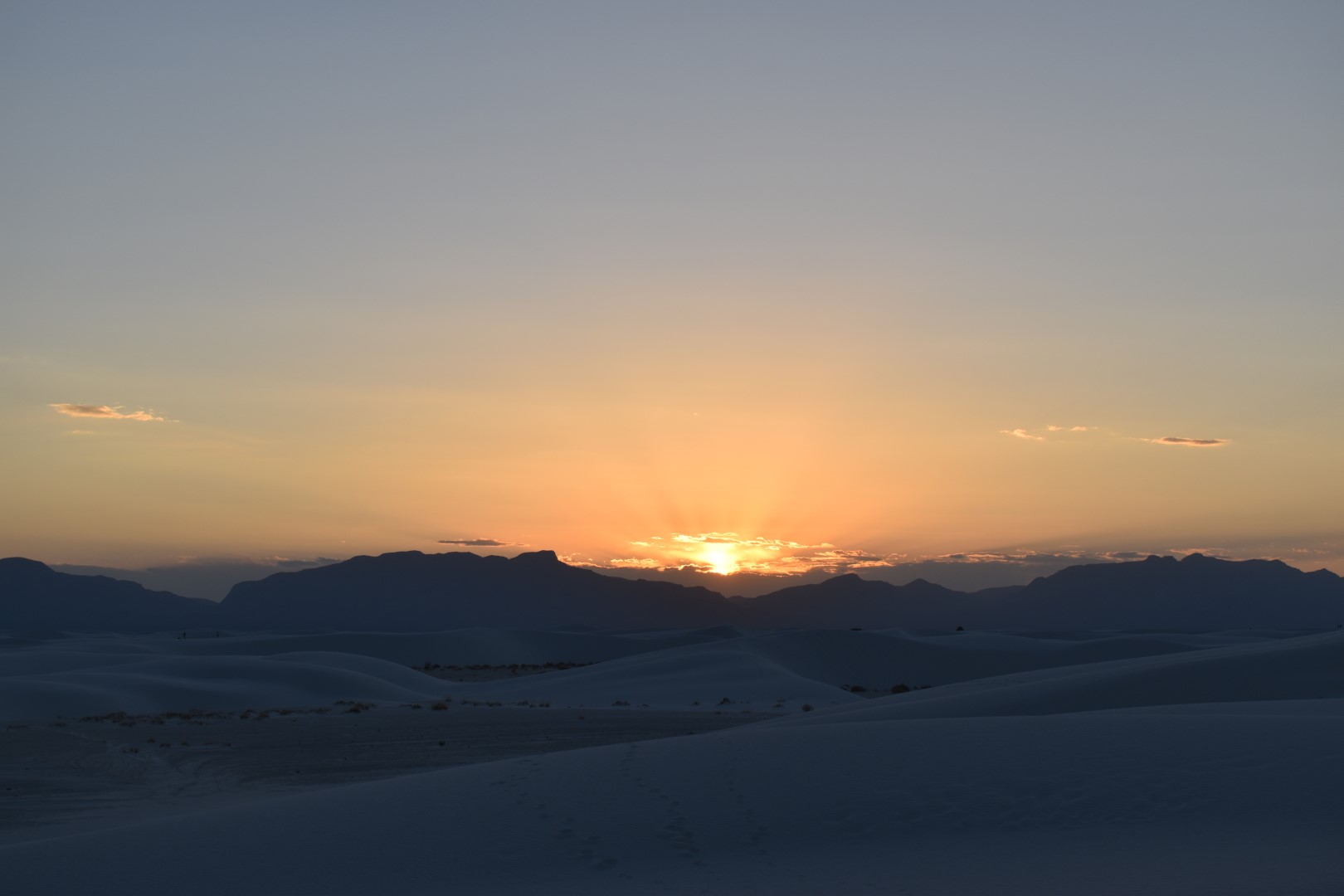
After the sun had set (but before it got dark) we retraced our steps through the dunes. The day’s final light cast a beautiful pastel glow over the sand.



It was just about dark on our way back out to the highway. We noticed a few cars stopped along the side of the road (which can often mean there’s something to see) and so I scanned the field and saw…well, something. It was a large animal that I had never seen before but certainly didn’t belong in the New Mexican desert. I couldn’t identify the animal but all I could think was that it looked like something from Africa. Did it escape from a zoo?
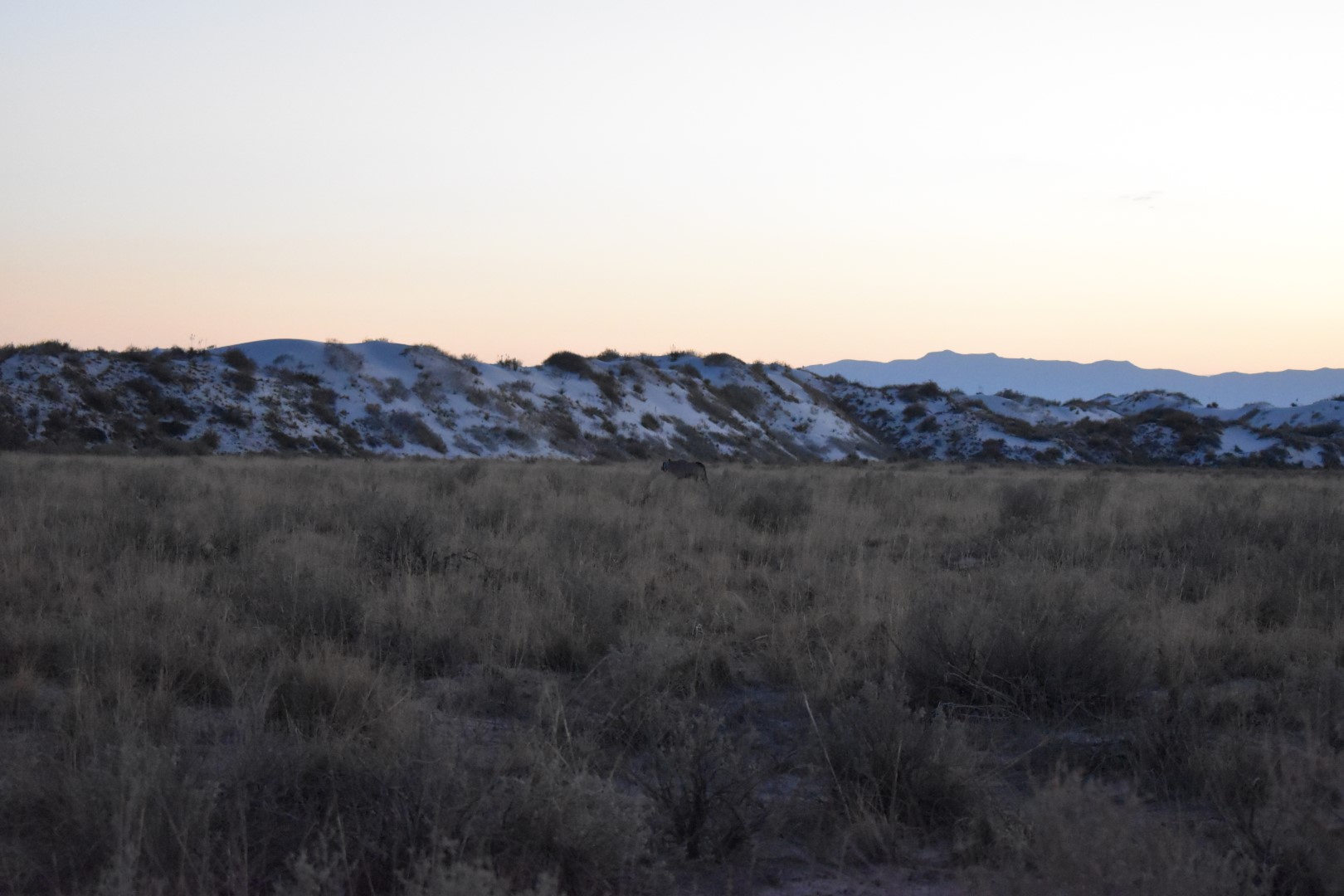
We pulled over and strained our eyes to see what it could be. A ranger pulled up behind our small group of cars and, on a loudspeaker, declared that we couldn’t stop here and needed to get moving. But what is that!? Why was there no information about anything, and why were the rangers focused only on roadway rules and not any form of education? I’ve never experienced anything quite like this before or since, and we left with more questions than answers.
As soon as we got back to service, we started researching. Our most pressing question was obviously the identification of the strange animal, but we also read about the geology of the dunes and the history of the first atomic bomb.
The animal was easy to figure out. It was an African Oryx (or Gemsbok), thousands of which live in the New Mexican desert. They, as well as two other big game species, were purposely introduced to New Mexico in the 1960s-70s to provide hunting opportunities in a state without much big game. White Sands attempts to keep the Oryx out of the park with fencing, but the one we saw evidently got through somehow. We also looked up the other two introduced species; the Ibex and the African Barbary Sheep, both of which are doing just as well as the Oryx in their new homes. Strangely, the Barbary Sheep looked familiar and we went back through the day’s photos. The animal we saw at Carlsbad Caverns wasn’t a Desert Bighorn like we assumed, but the African Barbary Sheep. We saw two out of three of the introduced big game species and didn’t even know that either existed. What an odd day.
We grabbed a late dinner in Las Cruces before making our way to our hotel for a much deserved sleep before our final day.
Chelsea

Not sure I would like to hike here in windy conditions. A lung full of gypsum may not be pleasant. Interesting about the large animal. Thanks for sharing Chelsea. Allan
LikeLike
We lucked out and had nice, calm air! I can’t imagine being pelted with sand grains.
LikeLike
wow I did not know about this national park. I’ve checked off a few more national parks this year (Glacier last week and Great Smokies last fall) but I didn’t know about this one. At least you don’t have to deal with insane crowds here.
LikeLike
White Sands was recently upgraded from National Monument to National Park! That might be why you haven’t heard of it. It’s also pretty small compared to some of the more well-known parks.
LikeLike
Your photos are wonderful, Chelsea. White Sands is one of those places I will never forget.
LikeLike
Thanks so much Tanja! It was very beautiful.
LikeLiked by 1 person
This place looks SO COOL and I’m in love with your sunset photos!
LikeLiked by 1 person
It’s pretty cool! There are a handful of other trails too, next time I’ll have to spend some more time there.
LikeLiked by 1 person
Come with me and we can backpack on the dunes too!
LikeLike
Yes please!!
LikeLike
This national park is aptly named. Your pictures at sunset are gorgeous!! This looks like such a neat place to explore (when it isn’t windy or scorching hot that is).
LikeLike
Thanks so much! Yes we were there in the evening (in April) and it wasn’t horribly hot, but I bet the afternoon was pretty toasty. And we lucked out with no wind too!
LikeLiked by 1 person
The sunrise on the desert is so beautiful! I just loved your blog, you are successful in portraying nature at it’s purest form. I wish I could visit these places, and one day I will!
LikeLike
Thank you so much! I hope that you’re able to travel soon 🙂
LikeLiked by 1 person
The tree shot is amazing.
LikeLiked by 1 person
Thank you! 🙂
LikeLiked by 1 person
I need to get to White Sands! I loved your pictures!
LikeLike
Thanks Laci! It was awesome!
LikeLiked by 1 person
I have every sympathy with your frustration about not being able to find relevant information about a place while you are there. Thank goodness for the internet when you get back home!
And my ‘animal in the wrong place’ was a camel in the middle of the Donana National Park in Spain.
LikeLike
A camel would definitely be a shock! Was it meant to be there?
LikeLike
From my diary – February 1989: Through the heat haze across the Madre, a camel appeared on the horizon: the last descendant of a herd of about eighty introduced to the Marismas in the 1900s for meat and as draft animals. Local people were not too happy about these newcomers, complaining that, amongst other things, they ate fodder that should have been for horses and cattle. They generally made life miserable for the camels, which did not thrive, and eventually the herd was left to its own devices. Now, only this one remains.
So, yes, it was meant to be there, but you’re unlikely to find one there now!
LikeLike
Fascinating, thank you for sharing!
LikeLike
I am with you; Hike a little further in and escape the crowds for a little solitude. – ‘Pursuing Balance Through Adventure’
LikeLiked by 2 people
After seeing Great Sand Dunes in CO with those enormous dunes against snow-capped mountains, White Sands was nice but not as impressive. Also being at White Sands when the temperature was over 90 degrees limited our hiking any distance, so we probably missed out on a lot of its beauty. Thank you for the sunset photos, and giving me a chance to appreciate White Sands more.
LikeLike
I can’t imagine visiting either of the sand dunes when it’s that hot…we certainly picked a good time to go. I love the understated beauty of White Sands and it was definitely more intense at sunset. But you can’t beat the giant dunes at Great Sand Dunes 🙂
LikeLike
Drove by White Sands but did not stop. I will next time we are in the area.
LikeLiked by 1 person
Great post. Especially loved the stark bare tree photo. I am usually not one who likes barren landscapes (I am more the lush green forests & seashore kind of person) but your informative post has me thinking I need to add a visit to White Sands to my bucket list.
LikeLike
Thank you! White Sands was very unique, I’m sure you will enjoy it!
LikeLike
Beautiful phot essay and informative indeed?
My few cents:
1. Your shots are breath taking;
2. The scenery is ethereal to say the least;
3. I have lived close to a desert like this (white and red sand though) and have also participated in a family desert car rally in my Ford Explorer (UAE 2001), competing against 750mother SUVs. But I think what you did is a better way to explore sand. I am glad the the US Park Service has upgraded it to a NP; and
4. If Arabian Oryx have been introduced, they are becoming an invasive species and I like the way they are not letting them in the national park. However, I would not want these beautiful animals to be hunted either.
Thank you for sharing such a beautiful photo essay.
Regards,
LikeLike
Thank you! 🙂 I really enjoyed White Sands, and have truly enjoyed each desert I’ve visited!
LikeLike
Great photos of White Sands, a place I have visited many many times. I .ived in Alamogordo for a number of years and would head to WS as much as I could. Sunsets/Sunrises are always amzing there. To bad you didnt get to witness the striking blues and fire skies. They are truly amazing to see. Hopefully you will get to visit again when things are back to normal…
LikeLike
I would LOVE to get back! We didn’t have nearly enough time there. Sunrise sounds like it would be pretty too.
LikeLike
They are. They have a balloon festival in Alamogordo, was cancelled this year, but they have them over white sands which is cool. Well worth a trip for that when things get back to normal..So Definetly make a trip back. You wouldnt think it but the area has alot to offer..
LikeLiked by 1 person